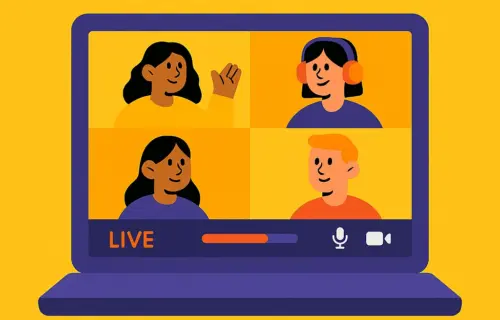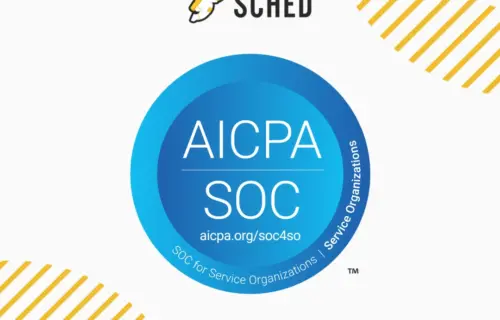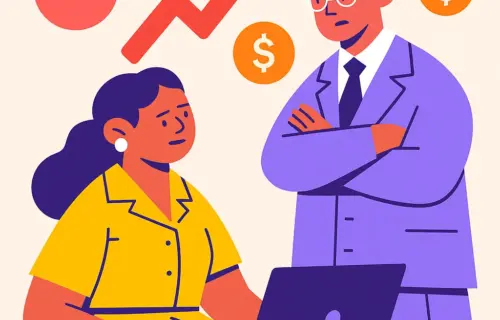Crafting a sponsorship proposal can be a transformative skill for anyone seeking support from businesses and organizations.
A successful sponsorship proposal highlights the mutual benefits for both the sponsor and the organizer, showcasing what makes your event or project unique.
Understanding how to write a sponsorship proposal involves research, clear communication, and precise tailoring to potential sponsors’ interests.
In this article, readers will discover effective techniques and practical advice to develop compelling sponsorship proposals that capture the attention of potential partners.
TL;DR
Table of contents
- 1 TL;DR
- 2 What Is A Sponsorship Proposal And Why Is It Important?
- 3 5 Things To Consider Before Writing A Sponsorship Proposal
- 4 What Types Of Information Are Included In A Sponsorship Proposal? 6 Elements To Include
- 5 How To Write A Sponsorship Proposal That Guarantees Success: 5 Actionable Tips
- 6 Key Takeaways
- 7 FAQs
- 7.1 Who typically writes a sponsorship proposal?
- 7.2 What is the very first section of a sponsorship proposal?
- 7.3 What does a sponsorship proposal look like?
- 7.4 How long should a sponsorship proposal be?
- 7.5 What’s the best sponsorship proposal design?
- 7.6 How much money do you need to ask for sponsorship?
- 7.7 Who pays for sponsorship?
- Research and Preparation: Understanding the event or project is essential. This helps in tailoring the proposal to align with the sponsor’s goals and interests.
- Structure and Content: Include sections such as an engaging introduction, details about the event or project, audience demographics, and benefits for sponsors. Highlight these elements to create a compelling narrative.
- Visual Presentation: Incorporate a clean design with images and graphics. Use headings, lists, and tables to make the document visually appealing and easy to navigate.
- Clear Call to Action: Conclude with a direct and compelling call to action. Specify timelines, deadlines, and the next steps for potential sponsors to take.
What Is A Sponsorship Proposal And Why Is It Important?
A sponsorship proposal is a document designed to persuade potential sponsors to support an event, project, or organization financially or through other means. It outlines opportunities for sponsors to benefit from their involvement and is crucial in formalizing partnerships.
A well-crafted proposal typically includes key elements:
- Clear Overview: Describes the event or project, its goals, and its target audience.
- Sponsor Benefits: Highlights what’s in it for the sponsor, such as brand visibility or audience engagement.
- Details and Logistics: Provides specific information on sponsorship packages, timelines, and metrics for success.
The importance of a sponsorship proposal lies in its ability to bridge the gap between parties. By effectively outlining mutual benefits, it fosters trust and collaboration.
In a competitive environment, it acts as a tool to differentiate one proposal from countless others. A compelling proposal not only secures necessary funding but also enhances reputation and reach for all involved.
5 Things To Consider Before Writing A Sponsorship Proposal
1. Know Your Audience
Identify who your potential sponsors are.
Research their values, mission, and past sponsorships to align your proposal with their objectives.
Consider questions like: What are their primary goals or challenges? and What type of audience do they wish to reach?
2. Define Clear Goals
Outline what you want to achieve with the sponsorship.
Do you aim for financial support, product donations, or media exposure?
Set measurable targets to guide the proposal’s focus and strategy.
3. Event or Project Details
Gather specifics about the event or project for which you’re seeking sponsorship.
Consider how this aligns with the sponsor’s interests.
Clearly define the event’s purpose, target audience, and timeline to provide a comprehensive context.
4. Understand the Competition
Investigate who else might be seeking sponsorship from the same sources.
Analyze their strengths and differentiate your proposal by highlighting unique benefits.
Reflect on: Why would a sponsor choose your proposal over others?
5. Tailored Sponsorship Packages
Develop tailored packages that offer varied benefits to potential sponsors.
Consider what you can offer, such as branding opportunities, exclusive access, or promotional support.
Offering flexibility can make your proposal more appealing.
What Types Of Information Are Included In A Sponsorship Proposal? 6 Elements To Include
1. Executive Summary
The executive summary provides a brief introduction. It outlines the purpose of the proposal and highlights the goals of the event or project. This section sets the stage for what sponsors can expect.
2. Event Details
This part includes information such as the event date, location, and target audience. Clear details about prior similar events or projects, if applicable, can help sponsors understand the context and potential scope.
3. Audience Information
Describing the demographics and interests of the target audience is crucial. This information allows potential sponsors to assess whether their brand aligns with the audience.
4. Sponsorship Packages
Different levels of sponsorship are outlined here with each level providing distinct benefits. This section includes details about what sponsors will receive in return for their support, such as advertising opportunities or brand visibility.
5. Creative Strategy
Innovative ideas and creative marketing strategies that highlight how the sponsor’s brand will be showcased are important to include. This might involve unique sponsorship activation ideas or exclusive engagement opportunities.
6. Terms and Conditions
This element outlines the legal aspects and expectations of the sponsorship agreement. Including this information ensures transparency and helps prevent potential misunderstandings between parties.
Each section should be clear and concise, emphasizing the value and benefits of partnering with your event or project.
How To Write A Sponsorship Proposal That Guarantees Success: 5 Actionable Tips
1. Clearly Define Your Objectives
Start by explaining the purpose of your proposal.
Whether it’s for an event, project, or partnership, clarity helps prevent misunderstandings. This sets a solid foundation and informs sponsors of what to expect.
2. Know Your Audience
Identify the target audience. Include demographic details and interests to help potential sponsors see alignment with their brand goals. Tailoring your proposal to match their audience increases the likelihood of a positive response.
3. Highlight Sponsorship Benefits
Emphasize what sponsors will gain.
Whether it’s increased brand awareness, marketing opportunities, or exclusive rights, detailing these benefits is crucial.
Use facts and supported claims to strengthen your points.
4. Offer Clear Sponsorship Packages
Create packages that cater to different sponsor needs.
Provide options, such as tiered levels, with distinct benefits. This flexibility can appeal to a wider range of sponsors and accommodate various budgets.
5. Include Testimonials or Case Studies
Incorporate relevant testimonials or case studies from previous sponsors.
Sharing successful outcomes builds trust and credibility. Highlight positive feedback and successful partnerships to illustrate potential benefits for the sponsor.
Key Takeaways
Writing an effective sponsorship proposal involves several crucial steps. These steps should be carefully followed to make the proposal compelling and suitable for your audience.
- Research Thoroughly: Knowing the event and aligning it with the sponsor’s needs increases the chances of approval. Understanding the demographics and market reach is vital.
- Personalize the Proposal: Tailor the proposal to each sponsor by including their company name and specific interests. This indicates attention to detail and dedication.
- Highlight Key Elements: Include essential components such as a cover slide with both parties’ details and prominent logos. This gives a professional touch to your proposal.
- Focus on Value Proposition: Clearly communicate the potential benefits that the sponsor will receive. The value proposition should be explicit and persuasive.
- Utilize Visuals and Formatting: Use visuals like tables or bullet points to break down complex information, making it more digestible for the reader.
FAQs
Who typically writes a sponsorship proposal?
Sponsorship proposals are commonly written by individuals directly involved with the project or event requiring sponsorship. This might include event organizers, marketing professionals, or business development teams.
They possess the necessary understanding of the project’s goals and the value offered to potential sponsors. Collaborating with graphic designers or marketing experts can enhance the proposal’s presentation, making it more attractive to prospective sponsors.
What is the very first section of a sponsorship proposal?
The first section of a sponsorship proposal is often the cover slide. It introduces the proposal, featuring the project or event’s name, the recipient’s name, company details, and the proposer’s contact information.
This slide sets the tone for the document, aiming to captivate attention and establish a professional connection immediately. Displaying the company’s logo prominently reinforces brand identity and memorability.
What does a sponsorship proposal look like?
A standard sponsorship proposal includes sections such as an introduction, audience demographics, sponsorship packages, and benefits for sponsors.
Visual appeal is crucial; hence, it often incorporates graphics, charts, and branding elements. Consistency in font and color throughout enhances readability. Tailoring the content to the specific audience’s interests and needs ensures relevance and effectiveness in conveying value propositions.
How long should a sponsorship proposal be?
The ideal sponsorship proposal is concise yet comprehensive, typically spanning 5-10 pages.
Each section should focus on relevant details without overwhelming the reader with excessive information. Including essential elements such as objectives, detailed benefits, and supporting statistics can help maintain a clear and engaging narrative.
Streamlining information also aids in keeping the reader’s attention and facilitating quicker decision-making.
What’s the best sponsorship proposal design?
Effective sponsorship proposal designs balance aesthetics with clarity.
Utilize clean layouts with ample white space to prevent clutter. Incorporate the brand’s colors and logos to maintain consistency and reinforce branding.
Visuals such as infographics can illustrate data more effectively than text. Prioritize readability by opting for easy-to-read fonts and avoiding overuse of decorative elements.
How much money do you need to ask for sponsorship?
The amount requested depends on the scope, audience, and value offered through the sponsorship.
Conducting research on industry standards and using benchmark data can guide the amount to request.
Understanding the sponsor’s marketing budget and aligning your ask with their objectives improves the likelihood of approval. Communicating a range, rather than a fixed number, allows for flexibility and negotiation.
Who pays for sponsorship?
Typically, sponsors allocate funds from their marketing or advertising budgets to support events or projects.
Organizations sponsor as a strategic investment to enhance brand visibility and reach target audiences.
Sponsorship agreements outline financial commitments, ensuring both parties understand their responsibilities.
Clarifying terms and expectations early in the relationship fosters mutual understanding and successful partnerships.









